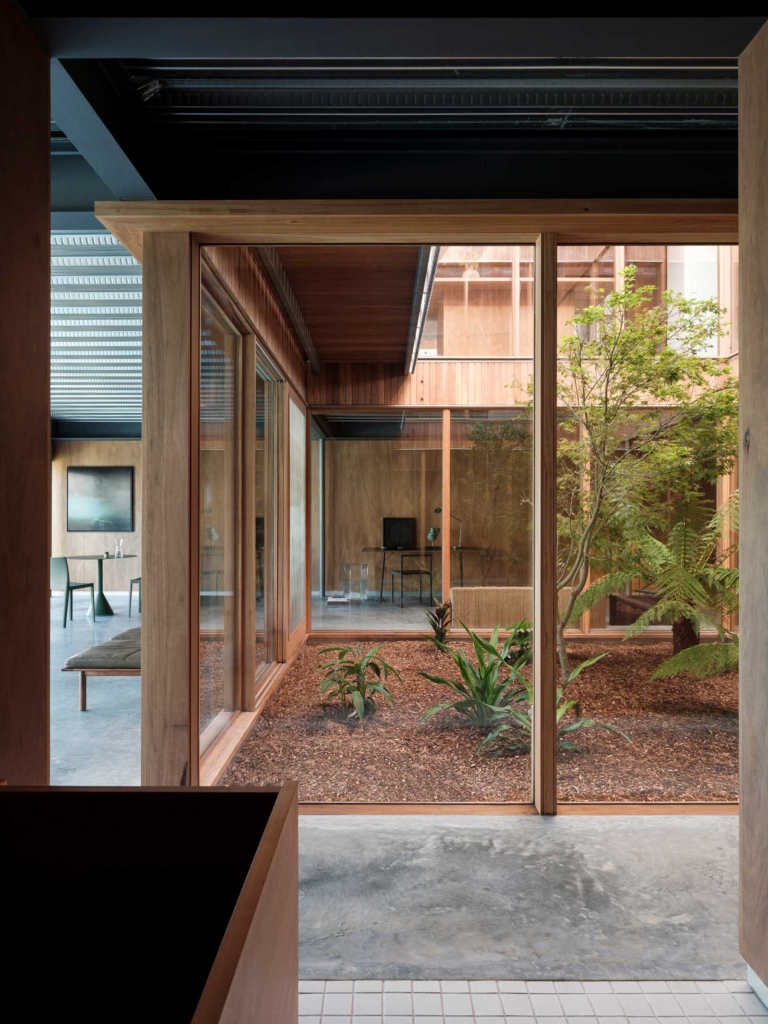
Greening Urban Spaces – Connecting to Nature in a Multi-Residential Context
Over the last few decades – and increasingly in recent years – there’s been a growing awareness of the value in fostering connections between humans and nature. From physiological health to mental and emotional wellbeing, the benefits of creating links to green spaces are well documented in ongoing scientific research. In the context of multi-residential living, the need for these benefits not only become more intensified for space-restricted living but are also more complex to achieve and have historically been deprioritised by bottom-line developers. As the greening of built environments continues to prove its power to clients and industry alike, living in denser urban conditions should no longer mean giving up the opportunity to feel connected to place, landscape or each other.
To the multi-disciplinary team at OCULUS, connecting with nature is particularly important in multi-residential living. Associate Landscape Architect Will Whitfield explains that being immersed in nature improves physical and mental health, but “when space is limited, outdoor places must also function for a wide range of daily activities – rest, work, play, exercise, dining, gardening, gathering and more.” The role of designed landscapes is, therefore, significant – not only to for its intrinsic, personal benefits but also for its flexible, community-supporting functions, which can impact entire neighbourhoods.
At ASPECT Studios, the internationally awarded team also believes that connecting to green space imparts an invaluable biophilic sense of wellbeing. Director Sacha Coles explains “the benefits can sometimes seem more emotional than tangible,” and that it could simply be the joy of accessing green areas with a cool wind in the height of summer that unlocks an important part of being human. ASPECT Studios views the integration of green space into multi-residential developments as extending the sense of home beyond its limits and as providing crucial opportunities to move away from digital screens to have a reviving encounter with the natural world, even if just in a humble way.
Where connections to nature can be supported in multi-residential design, they must be devised through a site-specific and environmentally responsive approach. “A multi-residential project in Brisbane will require a very different response to something in Adelaide. High-density is not a one-size-fits-all,” Sacha explains. The design process also involves strategic analysis of existing neighbourhood greenery to appropriately diversify the communal functions of introduced landscapes. However, there’s also resonant power in providing unprogrammed or loosely programmed natural spaces. For ASPECT Studios’s Green Square project, the design team was encouraged to develop unplanned green space to complement the range of new parks and public functions in the area.
Building links to natural environments in high density-living can support dynamic connections to both place and one another. Plantings by OCULUS at Arkadia Apartments “bring life, colour and movement to a previously industrial part of Sydney,” Senior Associate Tim Mitchell explains. The sensitively curated ecological design integrates multi-layered planting schemes, diverse colour palettes and seasonally responsive textures to immerse residents while also framing views of the Sydney skyline. A strong sense of place can be further achieved by allowing residents to take ownership of their surroundings and at OCULUS; this may take the form of providing flexibility to grow food, host family and friends and interact with neighbours.
Weaving multi-residential projects with nature is also significant for engaging with ancient understandings of land and cultivating the important recognition of Indigenous knowledge systems. As Sacha explains, using native plants and place-specific attitudes to horticulture “are of vital importance to building authentic landscaped connections,” as is cultivating a meaningful and ongoing consultation with First Peoples. At OCULUS, Tim details the team’s collaboration with MURRI YUL cultural consultants for an upcoming mixed-used development “to ingrain an Indigenous layer through art and planting.” He also reflects that an endemic palette of species supports the healing of Country and creates a restorative setting for people to not only connect with nature but also to understand the importance of Country for First Nations people.
More than ever before, we’re learning to appreciate the significance and far-reaching outcomes of open spaces in our progressively densified urban conditions. “Greenery is increasingly seen as something that is a benefit of living in a well-designed place. There is now an expectation that new large-scale residential projects will have communal third places,” Sacha describes. Nonetheless, there is still work to be done through education, discussion and advocacy to support clients and built environment authorities in committing to develop well-conceived, life-benefiting green connections.















